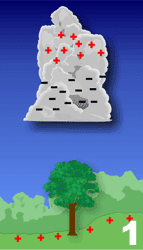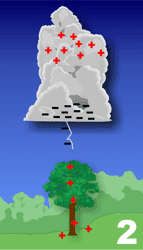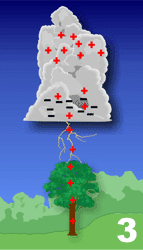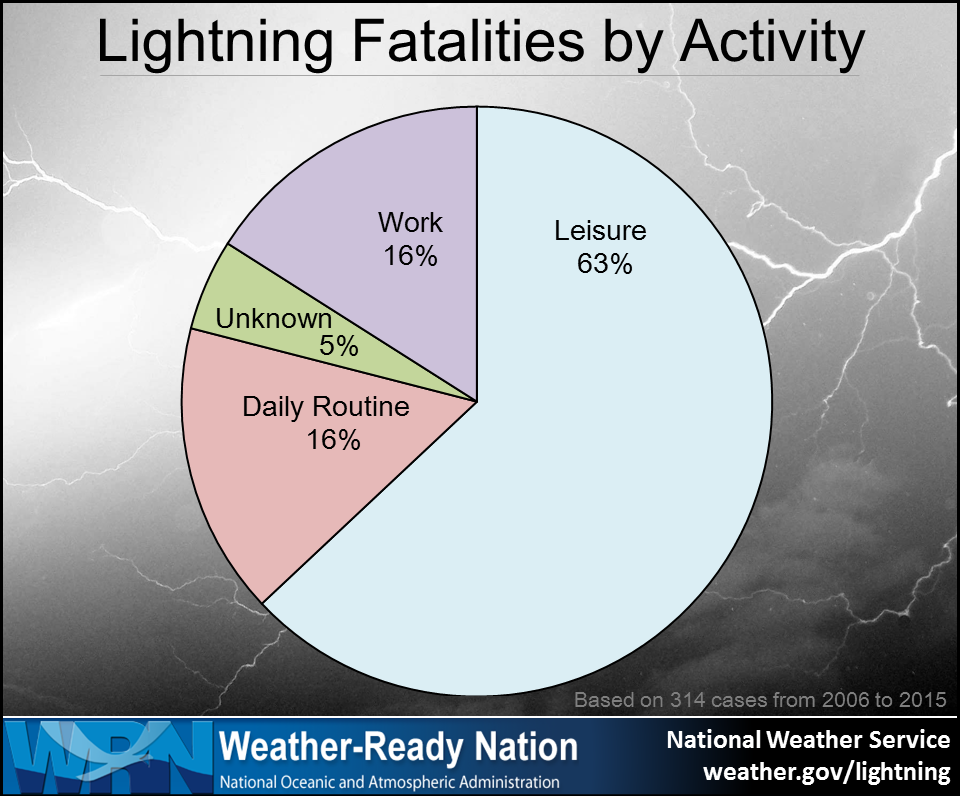 |
 |
 |
A moving thunderstorm gathers another pool of positively charged particles along the ground that travel with the storm (image 1). As the differences in charges continue to increase, positively charged particles rise up taller objects such as trees, houses, and telephone poles. A channel of negative charge, called a "stepped leader" will descend from the bottom of the storm toward the ground (image 2). It is invisible to the human eye, and shoots to the ground in a series of rapid steps, each occurring in less time than it takes to blink your eye. As the negative leader approaches the ground, positive charge collects in the ground and in objects on the ground. This positive charge "reaches" out to the approaching negative charge with its own channel, called a "streamer" (image 3). When these channels connect, the resulting electrical transfer is what we see as lightning. After the initial lightning stroke, if enough charge is leftover, additional lightning strokes will use the same channel and will give the bolt its flickering appearance.
Lightning has often been called the underrated killer since during an average year more people die from lightning nationwide than hurricanes and tornadoes combined. Lightning usually claims one or two victims at a time and does not cause mass destruction like tornadoes or hurricanes. Even still, numerous people each year lose their lives because of lightning. In addition, lightning injures hundreds of people per year and can cause life altering medical injuries such as memory loss, sleep disorders, chronic pain, muscle spasms and depression among many other things.
In 2016, 40 people died from lightning strikes. While there had been a steady decline in fatalities over recent years, this is the highest number of fatalities since 2007! We still must remain vigilant anytime there is a thunderstorm in the vicinity!
 |
 |